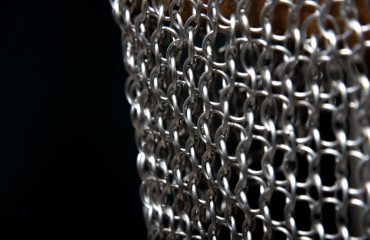Construction nails are seemingly simple components, yet their selection significantly impacts the strength, longevity, and overall success of any building project. Choosing the wrong nail can lead to structural weaknesses, costly repairs, and even safety hazards. This comprehensive guide explores the intricacies of construction nail standards and durability, ensuring you’re equipped to make informed decisions for your next project.
Understanding Construction Nail Standards: Size, Gauge, and Length
Construction nails are standardized according to their size, gauge (thickness), and length. These specifications are crucial for ensuring consistent performance and compatibility with different materials. The most common standard is the American Wire Gauge (AWG), which inversely measures the thickness of the nail; a smaller AWG number indicates a thicker nail. Length is typically measured in inches or centimeters, and is selected based on the materials being joined and the desired penetration depth. For example, a common framing nail might be a 16d (penny) nail, which translates to approximately 3.5 inches in length and a specific gauge, suitable for framing lumber. Different standards exist in various countries, so it’s essential to check the relevant regional standards before purchasing.
The Material Matters: Exploring Nail Composition and its Impact on Durability
The material used to manufacture construction nails significantly affects their durability and resistance to corrosion. Common materials include:
- Steel: The most prevalent material, offering a good balance of strength and cost-effectiveness. Steel nails are often galvanized (coated with zinc) to enhance corrosion resistance, particularly in outdoor applications.
- Aluminum: Lighter than steel, aluminum nails are preferred for applications where weight is a concern or when working with softer materials to avoid splitting. They are naturally corrosion-resistant.
- Stainless Steel: Offers superior corrosion resistance compared to galvanized steel, making it ideal for exterior projects or environments with high humidity. However, stainless steel nails are generally more expensive.
- Copper: Primarily used in specialized applications, copper nails offer excellent corrosion resistance and are sometimes chosen for their aesthetic appeal in certain architectural styles.
The choice of material should be carefully considered based on the project’s location, environmental conditions, and the required lifespan of the structure.
Nail Types and Their Specific Applications: From Framing to Finishing
Construction nails are available in a wide variety of types, each designed for specific applications. Some common types include:
- Common Nails: General-purpose nails suitable for various woodworking and construction tasks.
- Framing Nails: Heavier and longer nails designed for framing lumber, offering superior holding power.
- Finishing Nails: Smaller and thinner nails used for trim work and finer carpentry, leaving smaller holes for easier filling.
- Roofing Nails: Specifically designed with rings or barbs to provide superior holding power in roofing materials, preventing blow-off in windy conditions.
- Concrete Nails: Heavily hardened and often featuring a spiral shank for enhanced holding power in concrete and masonry.
Selecting the appropriate nail type is critical for ensuring structural integrity and preventing premature failure.
Testing and Certification: Ensuring Nail Quality and Compliance
Many construction nails undergo rigorous testing to meet specific standards and ensure consistent quality. These tests often evaluate the nail’s holding power, shear strength, and resistance to bending or breaking. Certification bodies, such as those accredited by ISO, provide independent verification of nail quality and compliance with relevant industry standards. Looking for certified nails can provide assurance of their performance and durability.
Factors Affecting Nail Durability Beyond Material and Type
While nail material and type are crucial, several other factors influence their long-term durability:
- Proper Driving Technique: Using the correct nail gun or hammer and driving nails straight and fully seated prevents premature failure.
- Wood Moisture Content: Nails perform best in wood with appropriate moisture content. Changes in moisture can cause wood to shrink or swell, potentially loosening nails.
- Environmental Exposure: Exposure to extreme weather conditions, such as prolonged rain or intense sunlight, can accelerate corrosion and reduce nail lifespan.
- Wood Species: The density and hardness of the wood influence nail holding power. Harder woods generally offer better nail retention.
- Pre-drilling: Pre-drilling pilot holes, especially when working with hard woods or brittle materials, can prevent splitting and improve nail holding power.
Careful consideration of these factors, in addition to the nail’s inherent properties, is essential for maximizing its service life.
By understanding the nuances of construction nail standards and the various factors influencing their durability, you can make informed choices that contribute to the strength, longevity, and safety of your projects. Remember to always choose the right nail for the job, and follow best practices for installation to ensure optimal performance.




